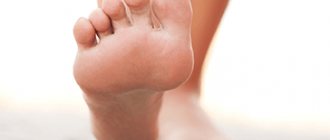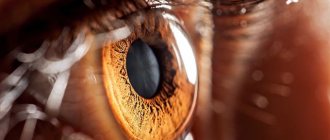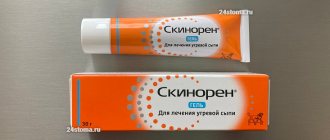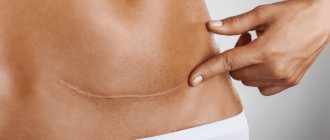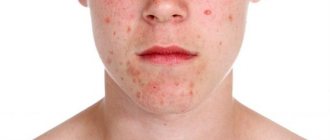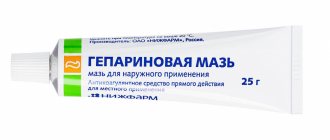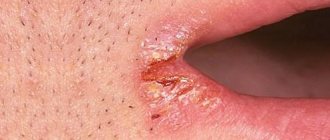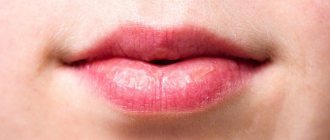Cheilitis is an isolated inflammatory process in the area of the mucous membrane, skin and red border of the lips. Outwardly it looks like swelling with redness and peeling of tissue. It can be an independent disease or a symptomatic manifestation of other pathologies. Sooner or later, almost every person encounters it, but at a young age the disease is noticeably milder, recurs less often and has no complications. In older people, due to a weakened immune system, periodic relapses of cheilitis can cause malignant tissue degeneration.
Causes
Cheilitis is a polymorphic and multifactorial disease that can be triggered by infections, physical and chemical environmental factors, as well as internal characteristics of the body. Among them:
- constant exposure to the open air - inflammation and peeling of the lips occurs when chapped by hot or cold air, excessive insolation;
- the presence of chronic diseases with skin manifestations of symptoms - various types of dermatitis, psoriasis, lupus erythematosus, lichen planus, syphilis, etc.;
- allergic reactions of the body - mainly with food allergies;
- tissue irritation from regular exposure to chemicals, including medications (for example, nasal drops);
- various neurological disorders, severe stressful situations, depression, constant anxiety;
- endocrine abnormalities - primarily hyperfunction of the thyroid gland, diabetes mellitus.
General characteristics of the condition
Painful cracks around the mouth are colloquially called jams. Zaeda is one of the forms of stomatitis (damage to the oral mucosa) caused by streptococci or yeast-like fungi of the genus Candida. In some cases, doctors diagnose mixed infection (angular stomatitis).
The following angulitis are distinguished: allergic (when using lipstick or other cosmetics), microbial (streptococcal, candidiasis, etc.) and post-traumatic (postoperative, post-manipulation, etc.). Microbial angulitis most often occurs in patients with diabetes mellitus (streptococcal) or in HIV-infected people (candidomycosis). Microbial angulitis in children can occur due to intestinal dysbiosis, vitamin deficiency, decreased immunity and other diseases. Post-traumatic (postoperative) angulitis is cracks in the skin and mucous membranes (linear tears in the skin or mucous membrane) in the area of the corner of the mouth, resulting from excessive (excessive) stretching after intraoral surgical dental operations (removal of dystopic or impacted wisdom teeth) or manipulations associated with treatment of wisdom teeth. Almost after every removal of an impacted or dystopic wisdom tooth, maxillary sinusotomy or other surgical interventions that require wide opening of the mouth, damage (by stretching) to the surface layers of the skin and mucous membrane in the area of the corner of the mouth occurs, i.e. post-traumatic (postoperative) angulitis.
Morphological features
Streptococcal angulitis most often develops in patients of the younger age category. First, a small bubble appears in the corners of the mouth, covered with a thin film. Later, erosion forms at the site of the bubble, covered with a crust of congealed blood and purulent masses. When the blister is opened, moist red skin with traces of minor bleeding is exposed. You can often find a crack in the center of the bubble. Approximately 1-2 hours after opening, the skin again becomes covered with a dense crust.
Content:
- General characteristics of the condition
- Possible reasons for development
- Features of therapy and prevention
Streptococcal infection of the mucous membrane is accompanied by discomfort and pain when opening the mouth.
Seizures of fungal origin are slightly different from streptococcal ones. Initially, a varnish-red erosion forms on the mucosa, surrounded by an additional layer of epithelium. Sometimes erosion is covered with a grayish coating. A specific crust does not form in case of candidiasis angulitis. Most often, the crack is masked by an overhanging skin fold and has a chronic, relapsing course.
Types of cheilitis
Manifestations of cheilitis may vary depending on the type and cause of the disease. There are:
- Exfoliative cheilitis - manifested by peeling of the red border of the lips, with rare areas of burning and dryness of the lips themselves.
- Exudative cheilitis - symptoms of the disease are supplemented by swelling and severe pain. The skin in inflamed areas may become covered with baked crusts, which greatly complicate the patient’s life.
- The glandular form affects the minor salivary glands. Their congenital or acquired proliferation is observed, followed by infection with bacteria. In this case, the source of infection can be caries, periodontitis or banal plaque. Outwardly it manifests itself as the formation of cracks on the surface of the lips, which begin to become wet over time.
- The allergic form occurs under the influence of household, cosmetic or food irritants (often this is lipstick). There are characteristic manifestations of allergic cheilitis in musicians who play wind instruments and in those who like to chew pencils. This type of inflammation is characterized by severe swelling, often with the formation of blisters, as well as itching, severe redness and burning.
- Meteorological cheilitis develops under the influence of weather conditions (wind, sun) and is manifested by burning, itching with small weeping blisters, in place of which erosions and ulcers form over time.
- The atopic form manifests itself as a symptom of dermatitis or neurodermatitis. Manifests itself in the form of redness and ulcers in the corners of the lips.
- The hypovitaminosis type of the disease is formed in response to a severe lack of vitamins, mainly vitamins A, C, B2. A characteristic burning sensation affects the surface of the lips, mouth and tongue. The mucous tissues take on a swollen appearance, cracks on the lips peel and bleed.
- Macrocheilitis is a response to damage to adjacent nerves (facial nerve neuritis), while itching and swelling from the tongue can spread to other parts of the face.
Attention! With a long course, there is a high probability of inflammation degenerating into a malignant neoplasm. This is especially typical for the meteorological form, which, in the absence of proper treatment, is often complicated by precancerous diseases.
Symptoms of seizures in the corners of the mouth
Clinical manifestations and symptoms of the lesion depend on many factors and stages. It usually begins with redness of the skin in the corners of the mouth, peeling, and the appearance of bursting blisters. Areas of erosion appear on the mucous membrane and skin of the corner, which become covered with a crust, when ruptured, cracks of varying depths can form.
In areas of inflammation, constant itching is felt, pain appears when opening the mouth, pain when eating spicy food. It is especially typical that a sharp pain appears in the morning, after sleep, when you first open your mouth.
But in some rare cases, obvious pain symptoms are mild, especially in elderly people, or in people suffering from diabetes mellitus (when seizures appear as a consequence of candidal stomatitis).
Diagnosis of cheilitis
There are no specific laboratory tests to detect cheilitis. All diagnosis of the disease is carried out by visual examination. To determine the causes of inflammation, diagnostics of the gastrointestinal tract may be prescribed for the presence of Crohn's disease or ulcerative colitis. Additionally, allergy tests are performed to exclude food allergies.
General laboratory tests allow you to check the condition of the body and determine the possible causes of cheilitis:
- low levels of vitamins due to hypovitaminosis can provoke exfoliative cheilitis;
- bacterial cultures of smears and biopsies are performed in patients with immune system disorders in the absence of results from the treatment;
- testing for markers of HIV infection, herpes, the presence of fungal or bacterial microflora, respectively, allows us to identify the viral, bacterial or fungal causative agent of cheilitis;
- a blood test for anemia, ESR are required to assess general health;
- examination of the function of the thyroid and pancreas for endocrine pathologies.
On a note! Cheilitis tends to be chronic with periodic relapses. Self-healing without medical supervision is almost impossible, so try to pay attention to such a “minor” problem and consult a specialist. Diagnosis of the disease is carried out by a general practitioner or attending dentist. In some cases, consultation with an allergist, infectious diseases specialist, dermatovenerologist or gastroenterologist may be required.
10 reasons for cracks in the corners of the mouth
The condition of the lips (their soreness, appearance) is one of the indicators of human health. Peeling, dryness, pallor, as well as cracks in the corners of the mouth can be not only a cosmetic defect resulting from physical damage and weather conditions, but also a companion to certain diseases and disorders in the body, and then treatment is required. Let's look at 10 reasons for the appearance of angular cracks (jams) in the corners of the mouth and ways to eliminate them.
Traumatization
Traumatization of the area around the lips leads to the appearance of cracks, causing an annoying feeling of dryness, tightness of the skin, and pain. The most common cause of damage is regular visits to the dentist, during which a person has to stretch his lips and open his mouth too wide. This is especially true when a doctor uses an instrument, such as an examination mirror, carelessly. Sometimes, after prolonged treatment by the dentist, the crack simply fails to heal.
In addition, similar problems can arise when using removable dentures: when they are inserted and removed, it is the area of the corners of the lips, which is particularly sensitive, that is most injured.
For quick healing in such cases, it is recommended to apply a complex of vitamins A and E to the damaged areas and make lotions from medicinal herbs (sage, calendula, chamomile).
Poor oral hygiene
Penetration of infections into microcracks in the skin due to insufficient hygiene of the body and oral cavity also often causes inflamed wounds in the corners of the mouth - especially in children who touch their faces with dirty hands. Frequent occurrence of angular cracks due to bacterial load also affects people who neglect regular brushing of their teeth and gums.
Adverse weather conditions
Dry, windy weather, frost, and arid heat are common causes of flaking and tightness of the skin in the mouth area, which, if it is not sufficiently moisturized, can lead to the formation of an inflamed crack. It is easy to prevent its occurrence by caring for the sensitive area: daily applying nourishing cream or Vaseline before going outside.
Avitaminosis
A lack of vitamin B12 in the body can cause angular fissures, and with them swelling and redness of the lips, inflammation of the tongue, conjunctivitis, and burning in the eyes. This condition is observed in spring vitamin deficiency, insufficient intake of the vitamin from food and in diseases that lead to disruption of its absorption by the body. In the first two cases, it is recommended to compensate for the lack of vitamin by including in the diet a sufficient amount of meat and dairy dishes, eggs, cabbage, spinach, legumes, and whole grain cereals. In the latter case, you need to see a doctor and undergo a course of treatment.
Fungal skin lesions
Cracks in the corners of the mouth can be fungal in nature - for example, caused by the Candida fungus. The disease is often provoked by reduced immunity due to past illnesses or the presence of general diseases (gastrointestinal pathologies, diabetes mellitus, blood diseases, etc.), taking antibiotics, cytostatics, hormonal drugs. Candidomycotic or yeast infection is usually covered with a grayish-white coating, which is easily removed with a napkin; there is no crust. Treatment of the fissure is carried out with the help of nystatin, levorin or other special ointments, and in severe cases it is accompanied by taking antimycotic drugs orally. A doctor should prescribe medications to treat fungal infections.
Syphilis
One of the elements of primary syphilis - chancre - is often disguised as an ordinary syphilis. In this case, the crack is usually painless, covered with a silvery-white coating and has a compaction at the base, which, when the lips are stretched, takes on an oval shape. When a secondary infection (bacterial or streptococcal) is added, the syphilitic lesion deepens and turns into a discomforting ulcer. Treatment of such a disorder is carried out under the supervision of a venereologist and consists primarily of destroying the causative agent of syphilis - Treponema pallidum.
Iron-deficiency anemia
Low hemoglobin is one of the common causes of cracks in the corners of the mouth. In the presence of the disease, the ulcer is often accompanied by general weakness, pallor, rapid heartbeat, shortness of breath and other symptoms. Treatment of angular fissure in anemia should be accompanied by the elimination of iron deficiency in the body, depending on its cause: eating foods rich in iron and vitamin B12 (whole grain bread, fruits, red meat, nuts, greens), taking special medications, antiparasitic therapy (in the presence of worms ) and other methods.
Diseases of internal organs
Sometimes chronic and recurrent binge eating can accompany some common diseases - for example, endocrine diseases, diseases of the cardiovascular system, gastrointestinal tract, and even disorders in the psycho-emotional sphere. In this case, the ulcer is usually soft to the touch, covered with a crust and is moderately painful. Elimination of the crack is possible with full treatment of the disorders that caused it. It is worth noting that it is not recommended to treat a stubborn crack in the corner of the mouth on your own - according to doctors’ observations, in 3% of cases it can become malignant.
Atopic cheilitis
Atopic cheilitis is an inflammatory disease of the lips, which often leads to the formation of a lip. The disease is neurodermatological in nature and can be provoked by allergies, hormonal disorders, but most often by malfunctions of the nervous system, which is why it is most common in children and adolescents aged 10-17 years. A crack in the disease occurs against the background of peeling, dry skin of the lips and face; Inflammation of the lip border and covering of their surface with small scales are also observed. For atopic cheilitis, vitamin therapy, treatment with antihistamines, and corticosteroid ointments are carried out in strict accordance with the doctor's prescription.
Bad habits Bad habits are common sources of health problems, and the symptom in question is no exception. Smoking, drinking alcohol, licking lips, biting nails, holding a foreign object (pencil, pen) in the mouth contribute to a decrease in both general and local immunity. When the harmful effects cease, cracks that arose for the above reasons quickly heal and stop appearing.
Treatment
Different forms of cheilitis differ in their approach to treatment. Collectively, the impact may include:
- correction of the psycho-emotional sphere - a neurologist prescribes sedatives, tranquilizers, a psychologist or psychotherapist conducts appropriate psychotherapy;
- physiotherapy - treatment with laser, ultrasound, magnetotherapy, electrophoresis is prescribed locally; they relieve irritation and accelerate tissue regeneration;
- drug symptomatic therapy - non-hormonal anti-inflammatory drugs are prescribed; in case of severe inflammation - hormonal drugs;
- immunotherapy – strengthen the immune system by taking immunomodulators and immunostimulants;
- vitamin therapy - taking vitamins A, C, group B (mainly vitamin B2) is of great importance;
- surgical treatment – typical for glandular cheilitis with enlargement of the salivary glands; Both laser ablation with a surgical laser and direct removal of areas of the gland are used;
- antiallergic therapy with antihistamines.
Additionally, the doctor may prescribe diet therapy with the exclusion of foods that provoke allergies or chemical irritation of tissues (spicy foods, saltiness and marinades). When staying outdoors for a long time, it is imperative to use special protective equipment.
Features of therapy and prevention
Best materials of the month
- Coronaviruses: SARS-CoV-2 (COVID-19)
- Antibiotics for the prevention and treatment of COVID-19: how effective are they?
- The most common "office" diseases
- Does vodka kill coronavirus?
- How to stay alive on our roads?
Therapy is based on eliminating the root cause of the seizure, but there are also general recommendations for caring for the affected skin. If the cracks are streptococcal in nature, ointments with antibiotics are additionally administered, and if they are fungal, ointments with an antifungal effect are administered. The skin around the crack must be regularly treated with disinfectant solutions to avoid re-development of the source of infection. After eliminating the root cause, therapy continues for another 7-10 days until the skin is completely restored.
Depending on the root cause of angulitis, the course of treatment may include the use of antibiotics, B vitamins or paraffin-based ointments. In most cases, the prognosis is favorable. The main thing is not to self-medicate, consult a doctor in a timely manner and follow all necessary recommendations.
Prevention
The main prevention of cheilitis is maintaining a healthy lifestyle and timely treatment of any infectious and allergic diseases. Basic list of measures:
- Eat right - a balanced menu should contain an abundance of fruits, vegetables, herbs, nuts, fish, and high-quality dairy products.
- Reduce the use of cosmetics - try to choose hypoallergenic formulations and constantly monitor the skin's reaction.
- Dose your exposure to open wind or direct sunlight.
- Protect your lip skin from physical and chemical damage.
- Take vitamin and mineral complexes periodically in courses (after consultation with your doctor).
- Give up bad habits.
- Seek medical advice promptly if you have characteristic symptoms.
Remember: your health is the greatest value, and constant monitoring of its condition is very important to maintain the body’s performance, especially in old age.
Types of angulite
Considering the etiology, seizures can be primary and secondary. In turn, the primary ones are divided into: streptococcal, viral and candidiasis.
Viral seizures. They are caused by a viral infection (herpes virus). In this case, a doctor will help you choose an ointment for sticking in the corners of an adult’s lips.
Streptococcal seizures are caused by streptococcal infection. A characteristic manifestation is the formation of a yellowish-red crust.
Candidiasis angulitis. The cause is a fungal infection. This type is characterized by a chronic course and the absence of a crust.
Treatment of cheilitis
Treatment of the disease depends on the causes of its occurrence. For example, to treat allergic cheilitis, drugs are used that reduce the body’s sensitivity to allergens - antihistamines, as well as vitamins. Zinc ointment, anti-inflammatory creams containing glucocorticoids, salicylic acid, and sulfur are used externally. Avoid substances that irritate the mucous membrane of the mouth and lips. After eating, rinsing with chamomile infusion or soda is useful. To determine the allergen, it is necessary to conduct allergy tests.
For fungal cheilitis, antifungal drugs are prescribed in combination with vitamin B2 and ascorbic acid. An examination by a dentist and, if necessary, complete sanitation of the oral cavity and thorough treatment of problem areas with oil solutions of vitamins are recommended. To prevent relapses, a diet with limited carbohydrates is prescribed. In the treatment of exfoliative cheilitis, corticosteroid and photoprotective ointments, 2% boric salicylic acid ointment are widely used. In the presence of an exudative form of exfoliative cheilitis, Bucca radiation is effective.
Diagnosis of this disease is carried out by several doctors: a therapist, a dentist, an allergist. A combination of systemic (general) and topical (local) drug therapy produces a good effect.
Back to articles

